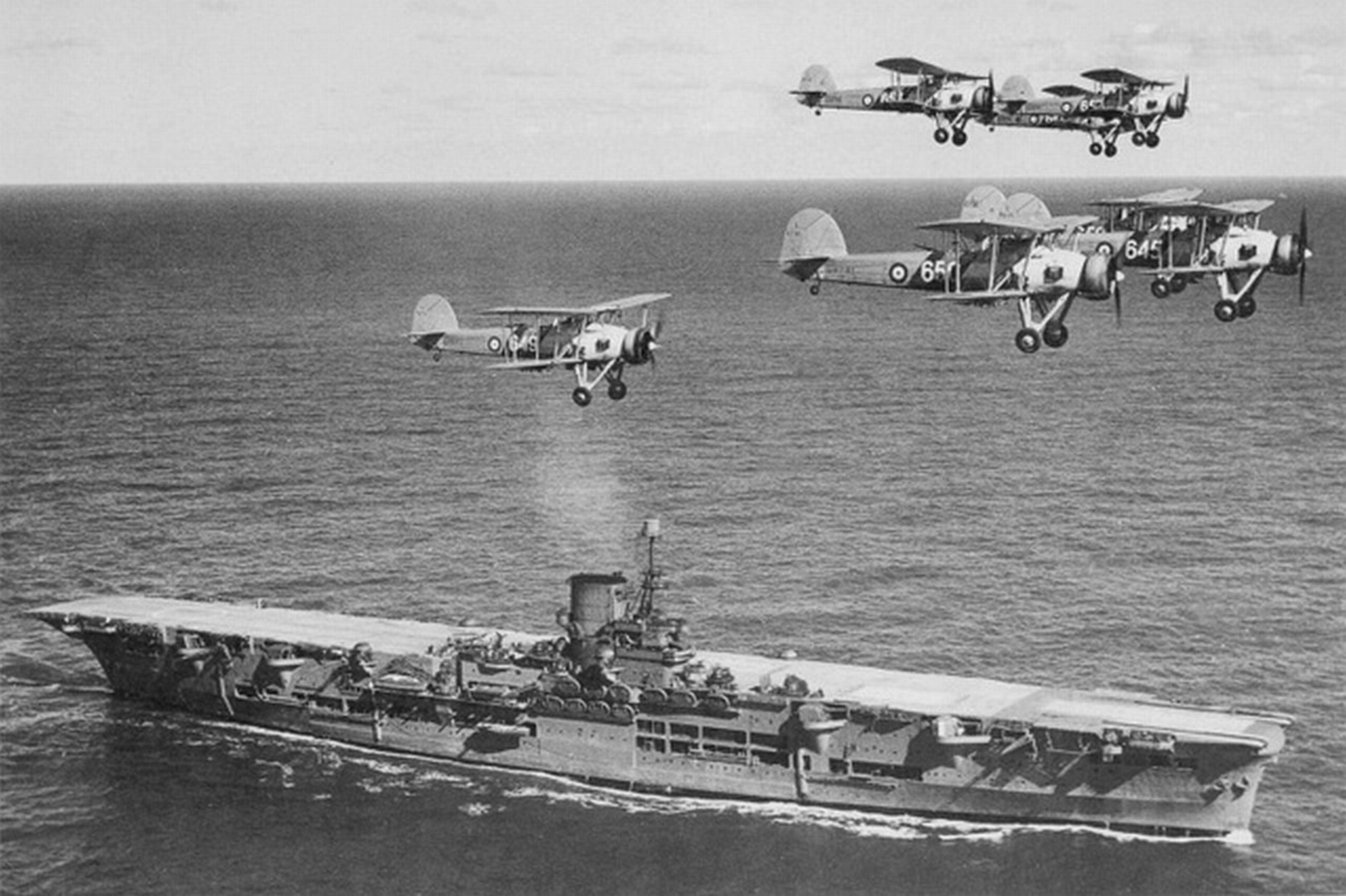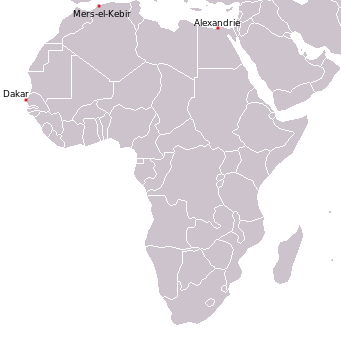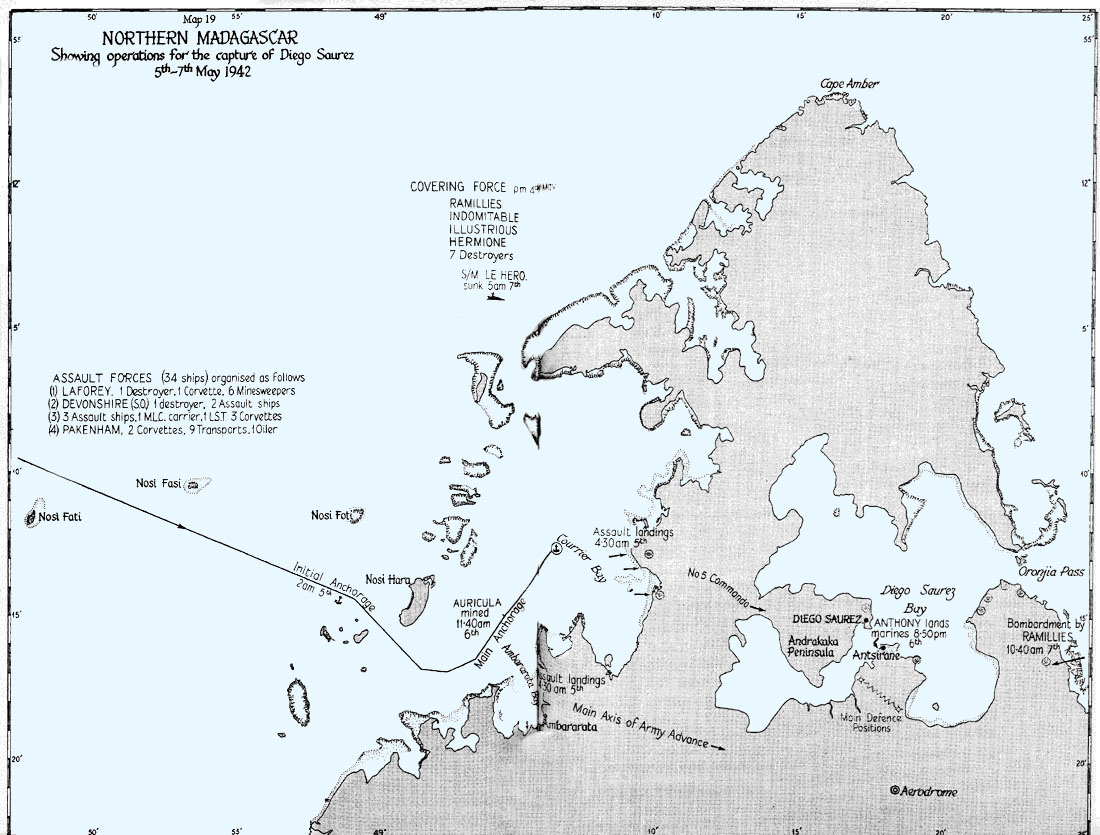|
820 Naval Air Squadron
820 Naval Air Squadron is a Royal Navy Fleet Air Arm carrier-based squadron flying the AgustaWestland Merlin HM2 in an Anti-Submarine role from RNAS Culdrose. The Squadron was formed at RNAS Gosport on 3 April 1933 with the transferral of the Fairey III aircraft from 450 Flight and half of 445 Flight of the Fleet Air Arm of the Royal Navy. History Second World War The squadron's first assignment on its formation was to carry out spotter-reconnaissance duties for the aircraft carrier . They were later re-equipped with Fairey Seals and Blackburn Sharks, eventually receiving Fairey Swordfish in autumn 1937. The squadron was reassigned in November the following year to the new aircraft carrier . The squadron operated from ''Ark Royal'' for the next three years, initially on anti-submarine duties, but later as surface search and torpedo-attack aircraft. The squadron went with ''Ark Royal'' to the Atlantic, and by April 1940 they were supporting Allied operations during the Norwegia ... [...More Info...] [...Related Items...] OR: [Wikipedia] [Google] [Baidu] |
Anti-submarine Warfare
Anti-submarine warfare (ASW, or in older form A/S) is a branch of underwater warfare that uses surface warships, aircraft, submarines, or other platforms, to find, track, and deter, damage, or destroy enemy submarines. Such operations are typically carried out to protect friendly shipping and coastal facilities from submarine attacks and to overcome blockades. Successful ASW operations typically involved a combination of sensor and weapon technologies, along with effective deployment strategies and sufficiently trained personnel. Typically, sophisticated sonar equipment is used for first detecting, then classifying, locating, and tracking a target submarine. Sensors are therefore a key element of ASW. Common weapons for attacking submarines include torpedoes and naval mines, which can both be launched from an array of air, surface, and underwater platforms. ASW capabilities are often considered of significant strategic importance, particularly following provocative instan ... [...More Info...] [...Related Items...] OR: [Wikipedia] [Google] [Baidu] |
Attack On Mers-el-Kébir
The Attack on Mers-el-Kébir (Battle of Mers-el-Kébir) on 3 July 1940, during the Second World War, was a British naval attack on neutral French Navy ships at the naval base at Mers El Kébir, near Oran, on the coast of French Algeria. The attack was the main part of Operation Catapult, a British plan to neutralise or destroy neutral French ships to prevent them from falling into German hands after the Allied defeat in the Battle of France. The British bombardment of the base killed 1,297 French servicemen, sank a battleship and damaged five other ships, for a British loss of five aircraft shot down and two crewmen killed. The attack by air and sea was conducted by the Royal Navy, after France had signed armistices with Germany and Italy, coming into effect on 25 June. Of particular significance to the British were the five battleships of the and es and the two fast battleships of the , the second largest force of capital ships in Europe after the Royal Navy. The British War Ca ... [...More Info...] [...Related Items...] OR: [Wikipedia] [Google] [Baidu] |
Battle Of Madagascar
The Battle of Madagascar (5 May – 6 November 1942) was a British campaign to capture the Vichy French-controlled island Madagascar during World War II. The seizure of the island by the British was to deny Madagascar's ports to the Imperial Japanese Navy and to prevent the loss or impairment of the Allied shipping routes to India, Australia and Southeast Asia. It began with Operation Ironclad, the seizure of the port of Diego-Suarez (now Antsiranana) near the northern tip of the island, on 5 May 1942. A subsequent campaign to secure the entire island, Operation Stream Line Jane, was opened on 10 September. The Allies broke into the interior, linking up with forces on the coast and secured the island by the end of October. Fighting ceased and an armistice was granted on 6 November. This was the first large-scale operation by the Allies combining sea, land and air forces. The island was placed under Free French control.Rigge p. 100 Background Geopolitical Diego-Suarez is a l ... [...More Info...] [...Related Items...] OR: [Wikipedia] [Google] [Baidu] |
Indian Ocean
The Indian Ocean is the third-largest of the world's five oceanic divisions, covering or ~19.8% of the water on Earth's surface. It is bounded by Asia to the north, Africa to the west and Australia to the east. To the south it is bounded by the Southern Ocean or Antarctica, depending on the definition in use. Along its core, the Indian Ocean has some large marginal or regional seas such as the Arabian Sea, Laccadive Sea, Bay of Bengal, and Andaman Sea. Etymology The Indian Ocean has been known by its present name since at least 1515 when the Latin form ''Oceanus Orientalis Indicus'' ("Indian Eastern Ocean") is attested, named after Indian subcontinent, India, which projects into it. It was earlier known as the ''Eastern Ocean'', a term that was still in use during the mid-18th century (see map), as opposed to the ''Western Ocean'' (Atlantic Ocean, Atlantic) before the Pacific Ocean, Pacific was surmised. Conversely, Ming treasure voyages, Chinese explorers in the Indian Oce ... [...More Info...] [...Related Items...] OR: [Wikipedia] [Google] [Baidu] |
Fairey Albacore
The Fairey Albacore is a single-engine biplane torpedo bomber designed and produced by the British aircraft manufacturer Fairey Aviation. It was primarily operated by the Royal Navy Fleet Air Arm (FAA) and was heavily used during the Second World War. The Albacore, popularly known as the "Applecore", was conceived as a replacement for the Fairey Swordfish, an earlier biplane introduced during the mid 1930s. It was typically operated by a crew of three and was designed for spotting and reconnaissance as well as level, dive, and torpedo bombing. First flown on 12 December 1938, the Albacore was in production between 1939 and 1943, and entered FAA service with 826 Naval Air Squadron during March 1940. The type was initially operated from land bases, being dispatched on attack missions against enemy shipping and harbours in the vicinity of the English Channel. The first operations onboard an aircraft carrier commenced in November 1940. At its height, 15 first-line FAA squadrons ... [...More Info...] [...Related Items...] OR: [Wikipedia] [Google] [Baidu] |
Iceland
Iceland ( is, Ísland; ) is a Nordic island country in the North Atlantic Ocean and in the Arctic Ocean. Iceland is the most sparsely populated country in Europe. Iceland's capital and largest city is Reykjavík, which (along with its surrounding areas) is home to over 65% of the population. Iceland is the biggest part of the Mid-Atlantic Ridge that rises above sea level, and its central volcanic plateau is erupting almost constantly. The interior consists of a plateau characterised by sand and lava fields, mountains, and glaciers, and many glacial rivers flow to the sea through the lowlands. Iceland is warmed by the Gulf Stream and has a temperate climate, despite a high latitude just outside the Arctic Circle. Its high latitude and marine influence keep summers chilly, and most of its islands have a polar climate. According to the ancient manuscript , the settlement of Iceland began in 874 AD when the Norwegian chieftain Ingólfr Arnarson became the first p ... [...More Info...] [...Related Items...] OR: [Wikipedia] [Google] [Baidu] |
Last Battle Of The Battleship Bismarck
The last battle of the German battleship ''Bismarck'' took place in the Atlantic Ocean approximately west of Brest, France, on 26–27 May 1941 between the and naval and air elements of the British Royal Navy. Although it was a decisive action between capital ships, it has no generally accepted name. On 24 May, before the final action, ''Bismarck''s fuel tanks were damaged and several machinery compartments, including a boiler room, were flooded in the Battle of the Denmark Strait. Her captain's intention was to reach the port of Brest for repair. Late in the day ''Bismarck'' briefly turned on her pursuers ( and the heavy cruisers and ) to cover the escape of her companion, the heavy cruiser to continue further into the Atlantic. Early on 25 May the British forces lost contact with ''Bismarck'', which headed ESE towards France while the British searched northeast, presuming she was returning to Norway. Later on 25 May the commander of the German force, Admiral Günther Lü ... [...More Info...] [...Related Items...] OR: [Wikipedia] [Google] [Baidu] |
Torpedo
A modern torpedo is an underwater ranged weapon launched above or below the water surface, self-propelled towards a target, and with an explosive warhead designed to detonate either on contact with or in proximity to the target. Historically, such a device was called an automotive, automobile, locomotive, or fish torpedo; colloquially a ''fish''. The term ''torpedo'' originally applied to a variety of devices, most of which would today be called naval mine, mines. From about 1900, ''torpedo'' has been used strictly to designate a self-propelled underwater explosive device. While the 19th-century battleship had evolved primarily with a view to engagements between armored warships with naval artillery, large-caliber guns, the invention and refinement of torpedoes from the 1860s onwards allowed small torpedo boats and other lighter surface combatant , surface vessels, submarines/submersibles, even improvised fishing boats or frogmen, and later light aircraft, to destroy large shi ... [...More Info...] [...Related Items...] OR: [Wikipedia] [Google] [Baidu] |
Battleship
A battleship is a large armored warship with a main battery consisting of large caliber guns. It dominated naval warfare in the late 19th and early 20th centuries. The term ''battleship'' came into use in the late 1880s to describe a type of ironclad warship,Stoll, J. ''Steaming in the Dark?'', Journal of Conflict Resolution Vol. 36 No. 2, June 1992. now referred to by historians as pre-dreadnought battleships. In 1906, the commissioning of into the United Kingdom's Royal Navy heralded a revolution in the field of battleship design. Subsequent battleship designs, influenced by HMS ''Dreadnought'', were referred to as "dreadnoughts", though the term eventually became obsolete as dreadnoughts became the only type of battleship in common use. Battleships were a symbol of naval dominance and national might, and for decades the battleship was a major factor in both diplomacy and military strategy.Sondhaus, L. ''Naval Warfare 1815–1914'', . A global arms race in battleship cons ... [...More Info...] [...Related Items...] OR: [Wikipedia] [Google] [Baidu] |
Malta Convoys
The Malta convoys were Allied supply convoys of the Second World War. The convoys took place during the Siege of Malta in the Mediterranean Theatre. Malta was a base from which British sea and air forces could attack ships carrying supplies from Europe to Italian Libya. Britain fought the Western Desert Campaign against Axis armies in North Africa to keep the Suez Canal and to control Middle Eastern oil. The strategic value of Malta was so great the British risked many merchant vessels and warships to supply the island and the Axis made determined efforts to neutralise the island as an offensive base. The civilian population and the garrison required imports of food, medical supplies, fuel and equipment; the military forces on the island needed reinforcements, ammunition and spare parts. British convoys were escorted to Malta by ships of the Mediterranean Fleet, Force H and aircraft of the Fleet Air Arm and Royal Air Force, during the Battle of the Mediterranean (1940–1 ... [...More Info...] [...Related Items...] OR: [Wikipedia] [Google] [Baidu] |







